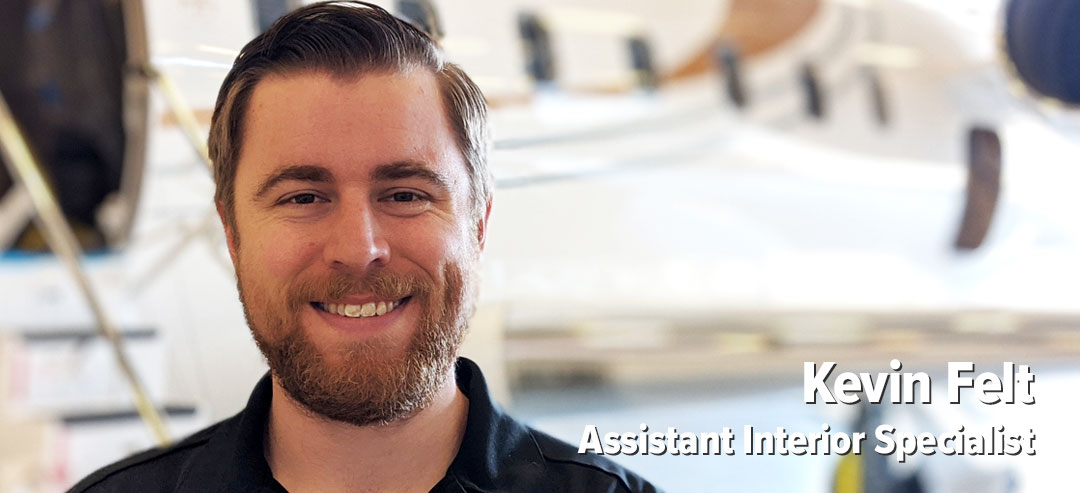Prepping your aircraft cabin, and your passengers, for post-COVID flying.
We’ve heard reports of it, and you may have seen it yourself. Your passengers hop onboard their private jet flight, careful to maintain proper social distancing and doing all the things they’ve read about to protect themselves while traveling, and out pops a PurellTM bottle on a short neon leash. To your dismay – nay, to your horror – that bottle snaps open and a few droplets of that isopropyl nectar drops not on hands but on the Himalayan Yak-leather seats your principal had installed just last year. Next comes a few squares of moisturizing Kleenex to work that hand sanitizer into every nook and crevasse of the seat, followed closely by every exposed wood surface, all but ensuring a germ-free flying experience.
You take a breath. You know something doesn’t look right, but you also know that you would probably do the same if flying on someone else’s aircraft right now. You have a duty to the aircraft owner to protect their interior, but you have a higher calling to protect your passengers’ safety. There must be a way to bridge the gap…
Start with this:
- Politely explain that the substance(s) they have spread on the seat/veneer/other may have an adverse effect on the material and, more importantly, their safety and yours.
- Offer to remove the substance immediately, preferably with a spray bottle pre-loaded with light soap and water and using a dedicated microfiber cloth as outlined below.
- Immediately remove any residual soap and water from the surface.
- While performing the above, explain to your passengers what steps have been taken within the cabin to ensure their safety and negate the need for their handiwork in your cabin. This is the most important step: assuring their safety and peace of mind!
Let’s get into some of the details to back this up…
Cleaning
Leather is like skin. Who are we kidding? Leather IS skin. Likewise, any chemicals or cleaners that are placed on leather will naturally be absorbed given enough time. Leather, also like living skin, has natural oils that give it its suppleness. Unlike living skin, however, leather does not have the ability to regenerate or remoisturize itself. When using cleaners that are harsh on oils, you can remove what may be the biggest benefit of using leather in your aircraft.
Generally speaking, avoid using products on your leather interior that “seal” the leather. As soft materials like leather, even vinyl and faux leather, need to breath as gasses escape the material, using sealers can prevent this natural process from occurring.
Cleaners that should be avoided at all cost (great for your home and/or car, not so much for your $100,000+ leather aircraft interior):
- Cleaners Containing Bleach (Example: CloroxTM Wipes)
- Household Disinfectants (Example: LysolTM Sprays)
- Cleaners Containing Alcohol (Example: Rubbing Alcohol)
- Industrial Disinfectants Not Intended for Material
Wood and faux wood veneer are a lot more forgivable in most cases (*but not all). Coated veneers should be cleaned with a manufacturer-approved cleaner, which is typically something that is suitable for cleaning plastics. Never, ever use glass cleaners of any kind on wood veneer. It’s tempting given the glossy finish, but it will break down the polymer coating. Unlike leather and soft goods, isopropyl alcohol is generally acceptable, but be sure to use a dedicated microfiber cloth when applying and removing.
Practice RTFM (“Read the Full Manual” — we took some creative liberty here). Improper use of the proper product is probably one of the most common issues that our interiors and completions shop addresses. Leather seats and appointments that have been treated with expensive products that are specifically designed for treating leather, but not used properly, are often worse than using no product at all.
Disinfecting
Disinfecting procedures should follow a combination of internationally recognized and published best practices and guidelines established by the aircraft and material manufacturers. These requirements vary widely by material, by type of operation, by region in use and by aircraft type, and they are too numerous to list here. As important as following disinfection protocols is to your passengers’ safety, being able to communicate what measures have been implemented on their behalf is important to their peace of mind.
Per the latest guidance from the European Aviation Safety Agency (EASA), consumer grade sanitizers and disinfectants that are arbitrarily applied to aircraft interior surfaces can lead to harmful and corrosive residues and endanger the health of passengers and crew.
So please, kindly ask your passengers to refrain from applying Purell to the seats and tables. Ensure that you are doing your part to prevent them from feeling the need to do so.
Other Best Practices & Advice from our Interior Completions Team
- Have microfiber cloths stored in individual Ziplock bags and each dedicated to cleaning different types of surfaces to prevent contamination or the possibility of introducing abrasive foreign objects onto the cloth. Do not dual purpose your microfibers.
- Clean your cabin between flights – this is always a best practice anyway!
- Talk to your passengers and discuss the cleaning and disinfecting that you’ve done and why.
- When it comes to cleaning specifically, avoid overuse of products – a better option is soap and water on a regular basis between flights, but cleaning products periodically as recommended
Additional Resources
Leather World Technologies
Cleaners, repair kits, etc., plus a knowledge center
https://leatherworldtech.com/
EPA Disinfectants for Use Against COVID-19
https://www.epa.gov/pesticide-registration/list-n-disinfectants-use-against-sars-cov-2
ACI Jet (of course!)
We do soft goods restoration, interior and exterior detailing, and more. Even if you just have a question for our team, give us a shout and we’ll do our best to point you in the right direction.
WHO
https://apps.who.int/iris/bitstream/handle/10665/331488/WHO-2019-nCoV-Aviation-2020.1-eng.pdf
Important Reminder: Manufacturers want to make sure their products last, for their brand reputation and to prevent costly returns and headaches, so ask them how to care for your material before assuming any other product may work!





